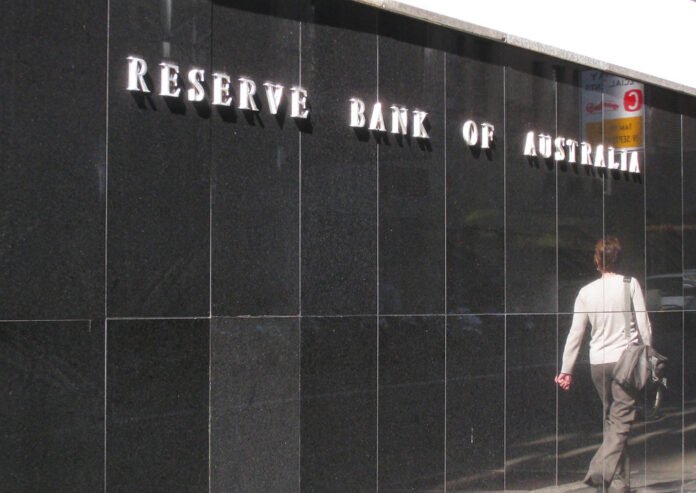Australia’s inflation picture is showing renewed signs of stability, with headline inflation holding steady at 2.4% annually and, for the first time in over three years, the Reserve Bank of Australia’s preferred core inflation measure — the trimmed mean — falling within its 2–3% target band.
According to data released by the Australian Bureau of Statistics (ABS) for the March quarter, trimmed mean inflation dropped from 3.3% to 2.9%, a key development that economists and markets say clears the path for an anticipated interest rate cut by the RBA later this month.
Market Expectations for a Rate Cut Solidify
Financial markets had already priced in a 0.25-percentage-point cut at the RBA’s May 20 meeting, with some speculating the central bank might even consider a larger cut depending on inflation dynamics. The trimmed mean result has reinforced this outlook.
READ MORE: Thousands of Australian Bank Login Details Leaked on Dark Web, and Banks Say They Can’t Stop It
Abhijit Surya, economist at Capital Economics, said the RBA is likely to look past headline inflation — which can be distorted by one-off factors like government subsidies — and focus on the consistent easing in underlying pressures.
“Inflation is evolving broadly in line with the RBA’s expectations,” Surya said. “If trimmed mean CPI continues on its current trajectory, it could fall to 2.7% by mid-year, aligning with the RBA’s February projections. That should be enough to warrant a 25 basis point cut to 3.85%.”
Headline Inflation Stable, But Electricity Costs Spike
Headline inflation rose by 0.9% over the quarter, maintaining the 2.4% annual rate. This sharp quarterly increase follows smaller 0.2% rises in both the September and December quarters of 2024. The March quarter spike was largely driven by a 16.3% increase in electricity prices, as key government rebates in several states, particularly Queensland, began to expire.
Callam Pickering, Asia-Pacific economist at Indeed, said the electricity price surge highlighted the volatility caused by temporary subsidies and the importance of focusing on core inflation indicators.
“Out-of-pocket spending on electricity in Queensland essentially quadrupled in the March quarter,” he said. “This highlights how distorted Australia’s inflation figures can become when short-term subsidies fall away.”
He added that despite the headline jump, the return of trimmed mean inflation to under 3% is significant and signals underlying price pressures are moderating.
Services Inflation Lowest Since 2022
Breaking down the inflation data:
- Services inflation declined to 3.7%, its lowest level since June 2022, down from 4.3% in the December quarter. This drop was primarily driven by lower rents and insurance costs.
- Goods inflation, in contrast, rose from 0.8% to 1.3%, largely reflecting the impact of electricity prices.
This rebalancing between services and goods inflation is consistent with global trends and adds to the argument that domestic inflationary pressure is easing, especially in the demand-driven service sectors.
Treasurer Chalmers Welcomes the Results
Federal Treasurer Jim Chalmers described the data as a “powerful demonstration of economic progress,” noting that both headline and core inflation are now within the RBA’s target band for the first time since 2021.
“When we came to office, headline inflation was 6.1% and rising. Now it’s 2.4%. Trimmed mean inflation was 4.9%, and now it’s 2.9%,” Chalmers said.
He acknowledged the temporary effects of energy subsidy expirations but emphasised that overall inflation performance was better than budget projections from just weeks ago.
“The budget forecasted 2.6% headline inflation. We’ve achieved 2.4%. We’re ahead of schedule,” he added.
Economists Predict More Rate Cuts Ahead
Gareth Aird, head of Australian economics at CBA, noted that the six-month annualised rate of underlying inflation is now running at 2.5%, which sits squarely at the midpoint of the RBA’s target range.
He, too, expects the RBA to begin a cycle of rate cuts starting in May, followed by additional reductions later in the year.
“With inflation returning to target and financial conditions tightening in global markets, there’s a strong case for policy easing,” Aird said.
Implications for Households
While the fall in inflation is welcome news, prices remain high. The moderation of inflation doesn’t mean that the cost of goods and services is declining — only that prices are rising more slowly than before.
Households still dealing with elevated living costs, especially in housing, utilities, and groceries, may not feel immediate relief. However, a rate cut by the RBA could provide some financial breathing room, particularly for mortgage holders.
Outlook
With headline inflation stable, core inflation easing, and electricity rebates winding down, the RBA appears to be regaining control over price pressures. The challenge ahead will be balancing rate cuts with global financial volatility and ensuring the inflation path remains within target — without reigniting demand-side pressures.
For now, economists and markets are aligned: a May rate cut is not only likely but expected.
